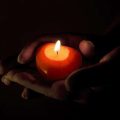Introduction to Nightmares in British Culture
Nightmares have long held a significant place in the collective consciousness of the British Isles, weaving themselves into the very fabric of folklore, literature, and everyday life. From ancient times through to the modern era, the British have regarded these unsettling nocturnal visions with a blend of fear, curiosity, and reverence. Historically, nightmares were often thought to be portents or messages from beyond, sometimes attributed to supernatural forces or malevolent spirits known as “night hags” or “mare.” Over centuries, these beliefs found their way into popular tales and literary works, shaping public perceptions about the meaning and cause of disturbing dreams. In daily life, nightmares have been both a source of anxiety and a subject for communal sharing, reflection, and even remedies passed down through generations. Today, while scientific understanding has reframed nightmares as psychological phenomena, echoes of traditional beliefs persist in British culture, demonstrating how deeply rooted these experiences are within the nation’s heritage.
2. Medieval and Early Modern Beliefs
In medieval and early modern Britain, nightmares were far more than troubling dreams; they were deeply entwined with the period’s spiritual, religious, and superstitious worldview. During these eras, the boundaries between the natural and supernatural worlds were perceived as porous, and night terrors were often interpreted through this lens. The experience of a nightmare was frequently associated with malevolent forces—ranging from witchcraft to demonic visitation.
Witchcraft and Nightmares
The belief in witches wielding harmful power was prevalent throughout Britain during these centuries. It was commonly thought that witches could curse individuals or send spirits to torment them during sleep. Afflictions such as sleep paralysis or vivid nightmares were sometimes cited as evidence of witchcraft at work, prompting both fear and suspicion within communities.
Supernatural Beings and Folklore
Nightmares were also attributed to a variety of supernatural beings rooted in British folklore. Perhaps the most notorious was the “Mare” or “Night Mare,” a sinister entity believed to sit upon sleepers’ chests, causing feelings of suffocation and terror. This figure gave rise to the very word “nightmare.” Other mythic creatures, such as elves or goblins, were also blamed for nocturnal disturbances.
Common Supernatural Explanations for Nightmares
| Supernatural Being | Description | Perceived Effect on Sleep |
|---|---|---|
| Mare (Night Mare) | A ghostly creature that sits on the chest | Suffocation, terror, inability to move |
| Witches | Humans with magical abilities | Curses resulting in disturbing dreams |
| Elves/Goblins | Mischievous spirits | Nocturnal pranks, unsettling visions |
| Demons | Evil spiritual entities | Pervasive fear, religious dread |
Religious Interpretations
The Christian Church played a significant role in shaping interpretations of nightmares during this time. Disturbing dreams were sometimes seen as divine warnings or as temptations sent by the devil to lead one astray. Religious texts and sermons encouraged believers to view nightmares as opportunities for self-examination or penance, urging prayer and confession as remedies for such nocturnal afflictions.
Summary of Medieval and Early Modern Perspectives
Taken together, these beliefs reflect a society deeply invested in understanding the mysteries of the night through a mixture of folklore, superstition, and faith. Whether seen as omens, curses, or spiritual trials, nightmares in medieval and early modern Britain were regarded with gravity—a testament to the era’s rich tapestry of cultural interpretations.

3. Folklore, Superstitions, and Popular Remedies
Within the rich tapestry of British history, nightmares have often been explained and confronted through a variety of folk traditions and superstitious beliefs. Central to these explanations is the age-old figure of the mare, from which the very word nightmare derives. In traditional British folklore, the mare was understood as a malevolent spirit or creature that would visit sleepers during the night, pressing upon their chests and causing feelings of terror and suffocation. This vivid image appeared in countless rural tales, where it was said that the mare could slip through keyholes or cracks in doors, seeking out vulnerable souls as they slept.
To guard against such nocturnal visitations, households across Britain developed an array of protective customs. One common practice involved placing iron objects—such as horseshoes or scissors—beneath the pillow or at the bedstead, as iron was believed to repel evil spirits. Sprigs of rowan or elder were also popular choices, hung above beds or windows to ward off supernatural harm. Another widely observed tradition was turning ones shoes upside down before sleep, a simple yet potent charm intended to confuse lurking spirits.
In addition to these physical protections, ritualistic actions held great significance. Reciting specific prayers before bed or drawing protective symbols near sleeping quarters were thought to offer spiritual defence. Some families kept special amulets or charms—often gifted by wise women or cunning folk—that promised to safeguard dreams and ensure peaceful rest.
These customs were not merely quaint relics but practical responses to the deep anxieties surrounding sleep and vulnerability in pre-modern Britain. They reflect a worldview in which the boundaries between the physical and spiritual realms were permeable, and nightly terrors could be countered with a blend of faith, ritual, and communal wisdom.
4. Scientific and Psychological Approaches in the Victorian Era
The Victorian era marked a pivotal moment in British history, not only for its profound social and technological changes but also for a significant shift in the understanding of nightmares. Prior to this period, nightmares were often interpreted through the lens of superstition or moral failing, sometimes attributed to supernatural entities or spiritual unrest. However, the rise of medical science and psychology during the 19th century brought about a transformation in attitudes towards these nocturnal disturbances.
With increasing advancements in anatomy, neurology, and mental health studies, Victorian physicians began to explore nightmares as phenomena rooted in bodily and psychological processes rather than external malevolent forces. The following table illustrates how explanations for nightmares evolved during this era:
| Traditional Beliefs | Victorian Scientific Explanations |
|---|---|
| Supernatural causes (witches, demons) | Nervous disorders, indigestion, sleep environment |
| Moral failings or guilt | Psychological stress, unresolved trauma |
| Divine punishment or omens | Physical illness, brain activity during sleep |
One prominent figure was Dr. John Abercrombie, whose writings on diseases of the brain and mind provided detailed accounts of how physiological factors could influence dreams and nightmares. Similarly, early psychologists such as Henry Maudsley began to advocate for a more compassionate approach towards those experiencing disturbing dreams, viewing them as symptoms that warranted medical attention rather than condemnation or fear.
This scientific perspective did not completely eradicate older beliefs from popular culture; however, it did lay the groundwork for subsequent developments in dream interpretation and therapy in Britain. By reframing nightmares within the context of emerging disciplines like psychiatry and neurology, Victorians contributed significantly to the modern understanding of sleep disorders—a legacy that continues to inform British attitudes today.
5. Contemporary Views and Cultural Representations
In modern British society, nightmares are perceived through a complex lens that blends scientific understanding, cultural memory, and everyday experience. The portrayal of nightmares in British media often oscillates between the psychological and the supernatural. Television dramas, literature, and films frequently depict nightmares as both manifestations of inner turmoil and echoes of ancestral fears, demonstrating how old beliefs subtly persist in contemporary storytelling.
Mental health discourse in the UK now approaches nightmares with empathy and clinical insight. The NHS recognises nightmares as potential symptoms of stress, trauma, or underlying mental health conditions such as anxiety or post-traumatic stress disorder. This shift marks a departure from older superstitions, reflecting an increased emphasis on wellbeing and therapeutic intervention. Counselling services and public health campaigns encourage open conversations about sleep disturbances, aiming to destigmatise experiences that were once shrouded in secrecy or attributed to supernatural causes.
Everyday language in Britain still draws upon the rich tapestry of nightmare folklore. Phrases like “it was a real nightmare” or “that’s my worst nightmare” have become idiomatic, used to describe everything from minor inconveniences to profound personal challenges. This linguistic inheritance underscores how deeply embedded the concept remains within British culture, even as its meanings evolve.
The persistence of nightmare imagery in music, art, and popular culture further illustrates the fascination with the darker aspects of the mind. From gothic album covers to evocative poetry, creative expression continues to explore themes of fear and vulnerability associated with troubled sleep. These representations foster dialogue about mental health and remind us that nightmares—whether literal or metaphorical—are a shared human experience.
Contemporary British attitudes towards nightmares thus reflect a nuanced blend of historical legacy and modern sensibility. While ancient fears linger at the edges of collective imagination, science and social awareness have reframed nightmares as opportunities for understanding and healing. This synthesis ensures that nightmares remain not only a subject of curiosity but also a catalyst for compassion within British society.
6. Conclusion: Changing Attitudes and Enduring Themes
Reflecting on the evolution of British beliefs about nightmares, it becomes clear that attitudes have shifted considerably over time, yet certain underlying themes remain remarkably resilient. In earlier centuries, nightmares were often interpreted through a supernatural or religious lens, seen as omens or visitations by malevolent spirits. Such beliefs influenced not only personal responses but also broader social practices, from the use of protective charms to the recitation of prayers before sleep.
With the advent of scientific thinking during the Enlightenment and into the Victorian era, explanations for nightmares began to shift towards physiological and psychological causes. The rise of medical inquiry saw nightmares linked to indigestion, anxiety, or the effect of external stimuli during sleep. Despite this rational turn, the lingering fear and fascination with the unknown persisted in popular imagination and folklore.
In contemporary Britain, while nightmares are largely understood through the frameworks of psychology and neuroscience, echoes of traditional beliefs continue to shape attitudes. Many people still attribute especially vivid or recurring nightmares to stress, unresolved emotions, or even supernatural forces during times of uncertainty. The persistence of stories about night terrors and cultural references to “the old hag” in some regions demonstrate how folklore quietly endures alongside modern science.
Throughout history, one enduring theme is the recognition that nightmares reveal something hidden within the human experience—be it fears, anxieties, or spiritual messages. Whether viewed as a product of troubled digestion in a Victorian parlour or as a sign of psychological distress in today’s clinical settings, nightmares remain a window into both personal and collective anxieties.
Ultimately, British attitudes towards nightmares have evolved from fear and superstition to curiosity and clinical interest. Yet across generations, they continue to reflect a deep-seated desire to understand—and perhaps control—the mysterious workings of the sleeping mind. In this way, the story of British beliefs about nightmares is one of both change and continuity: an ongoing conversation between the past’s shadows and the present’s search for understanding.


